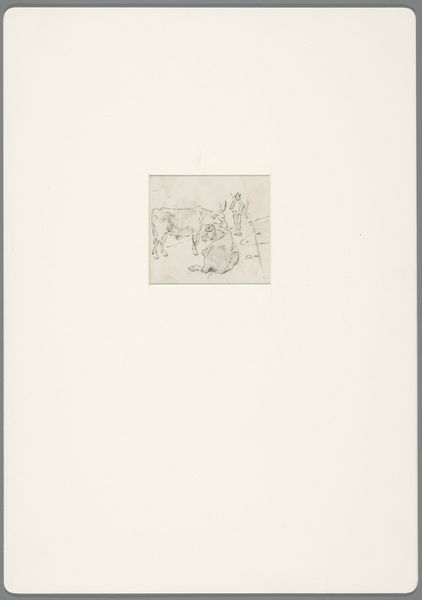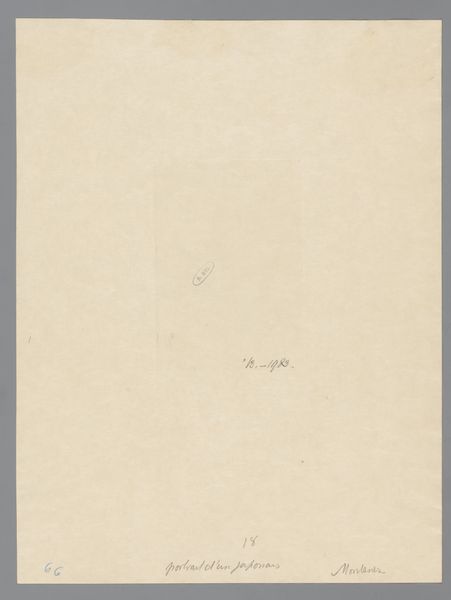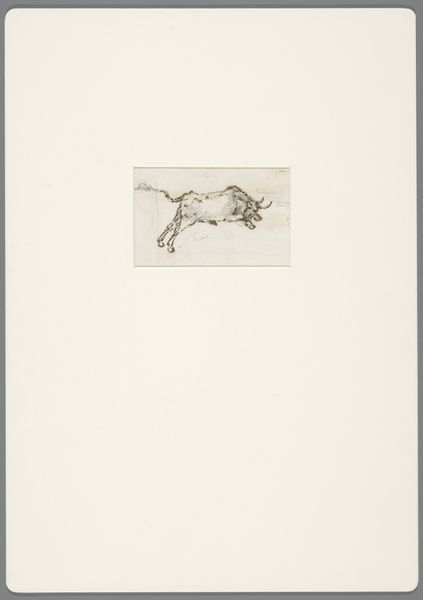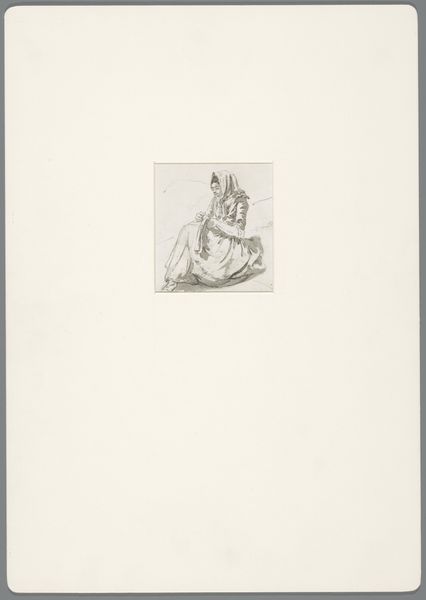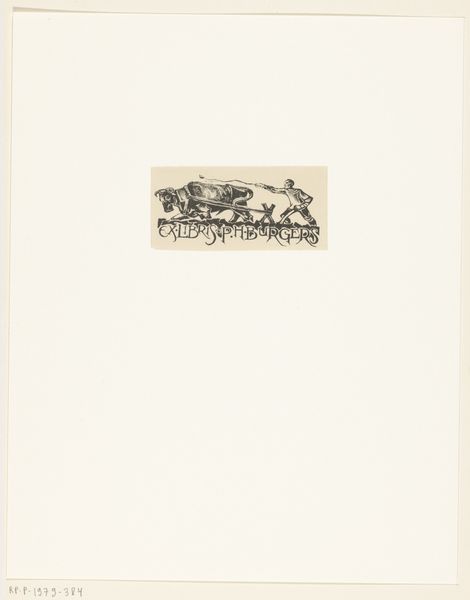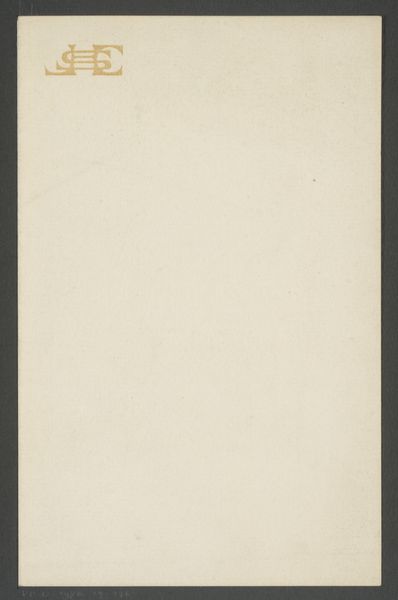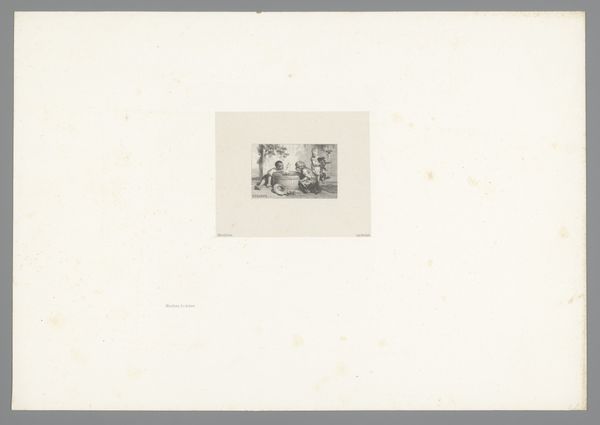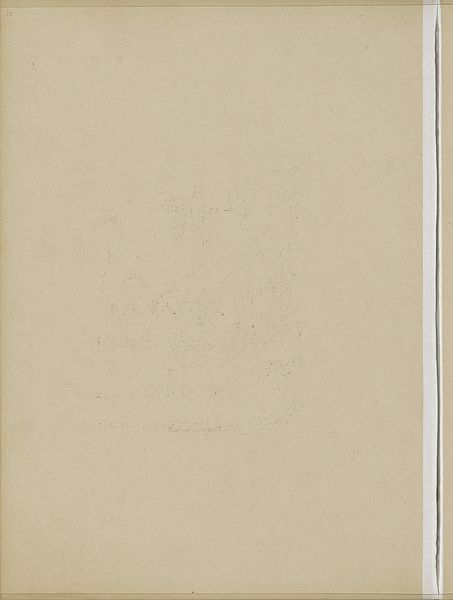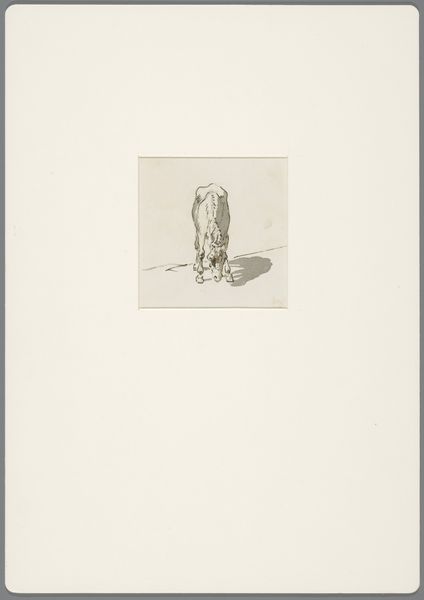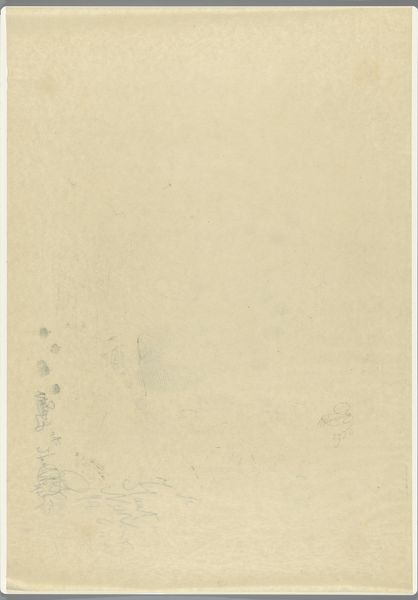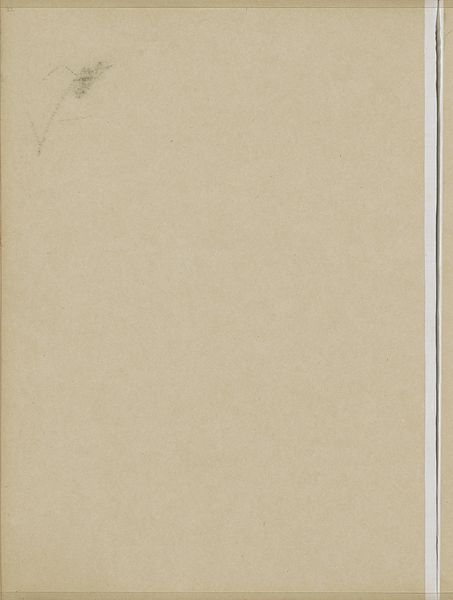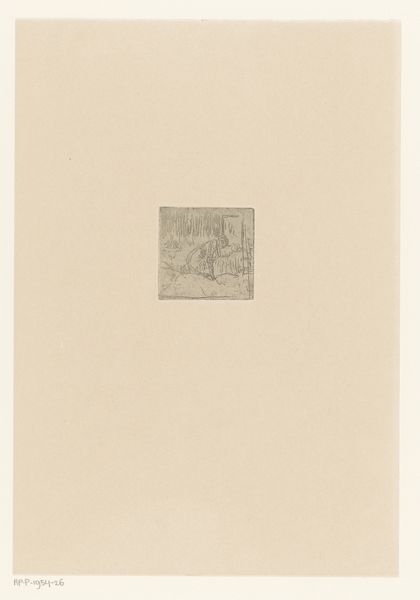
Dimensions: height 69 mm, width 105 mm
Copyright: Rijks Museum: Open Domain
Curator: This pencil drawing, "Vier schapen in het zonlicht," or "Four Sheep in Sunlight," attributed to David Alphonse de Sandoz-Rollin, transports us to a pastoral scene. Likely created between 1750 and 1809, it embodies elements of both Romanticism and genre painting. Editor: The first thing that strikes me is how economical the lines are. It’s almost monochromatic. The artist achieves so much with so little tonal variation. There's a lightness of touch here. Curator: Absolutely. I find myself thinking about the era's broader societal contexts when viewing this work. Consider the economic roles of women in animal husbandry in the 18th century; these weren’t merely pretty sheep. Livestock represented capital, and these flocks helped secure wealth in a turbulent economic climate. The imagery can also point us towards issues around land use and ownership. Editor: It’s tempting to read it entirely through that sociopolitical lens. Yet, can we consider how the subtle gradation of shading creates volume in each sheep’s fleece? How the arrangement of the four figures constructs a delicate rhythm? De Sandoz-Rollin gives just enough information for our eye to perceive recession into the implied space. Curator: It is true that Sandoz-Rollin manages to invoke atmosphere while employing such understated techniques. However, ignoring context, in this case, potentially overlooks how images like these served specific functions. These bucolic depictions played a part in solidifying notions of rural life as uncomplicated. In reality, country life included harsh conditions. This is where considering ideology matters! Editor: Your reading exposes a blind spot of formal analysis. Still, attending to the formal elements first, such as the drawing’s subdued palette and subtle lines, cultivates awareness of what is specifically there. From here, we can begin to unpack these socio-historical arguments. Curator: Yes, bringing these methods into a shared focus can result in new ways of understanding what artworks may communicate. By layering textual interpretation with formalism, we recognize complexity within this serene-seeming sketch. Editor: Indeed, noticing how form and historical context can come together deepens and complicates our viewing experience, shifting away from simple readings of these pastoral creatures.
Comments
No comments
Be the first to comment and join the conversation on the ultimate creative platform.
